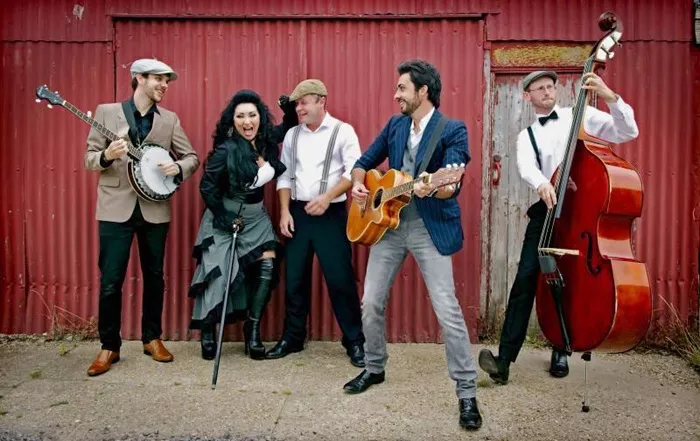Folk rock music is a genre that emerged in the mid-1960s, blending elements of traditional folk music with rock and roll. It marked a significant evolution in both the folk and rock music scenes, combining acoustic instrumentation, storytelling lyrics, and the electric energy of rock music. In this article, we will delve deep into the origins, characteristics, influential artists, and lasting impact of folk rock music.
Origins of Folk Rock
The roots of folk rock can be traced back to the folk music revival of the late 1950s and early 1960s. During this time, artists like Bob Dylan, Joan Baez, and Pete Seeger were gaining popularity for their acoustic folk songs that often carried social and political messages. Meanwhile, the rock and roll movement was in full swing, with bands like The Beatles and The Rolling Stones dominating the charts with their electric sound.
The fusion of these two musical worlds occurred when folk musicians began incorporating elements of rock music into their compositions. This included using electric instruments such as guitars, bass, and drums, as well as adopting the more dynamic song structures and rhythms of rock music. The result was a new sound that retained the introspective storytelling of folk music while adding a contemporary edge.
See Also: 12 Kinds of Indie Rock Music
Characteristics of Folk Rock Music
Folk rock music is characterized by several key elements that distinguish it from traditional folk or rock music:
Acoustic and Electric Blend: Folk rock songs often feature a mix of acoustic and electric instruments. Acoustic guitars, banjos, and mandolins are combined with electric guitars, bass, and drums, creating a rich and layered sonic texture.
Storytelling Lyrics: Like traditional folk music, folk rock songs often tell stories or convey messages through their lyrics. Themes such as social justice, love, nature, and personal introspection are common in folk rock lyrics.
Melodic Hooks: Folk rock songs frequently incorporate catchy melodies and memorable hooks, drawing listeners in with their melodic charm while still maintaining a sense of authenticity and depth.
Harmonies: Vocal harmonies play a significant role in folk rock, adding depth and emotion to the music. Many folk rock bands and artists excel in harmonizing vocals, creating a captivating and immersive listening experience.
Diverse Influences: Folk rock music draws inspiration from a wide range of musical influences, including traditional folk music, blues, country, and rock and roll. This diversity of influences contributes to the genre’s versatility and creativity.
Influential Artists in Folk Rock
Several artists and bands have played a pivotal role in shaping the folk rock genre and influencing subsequent generations of musicians. Here are some notable figures in folk rock history:
Bob Dylan: Often regarded as the pioneer of folk rock, Bob Dylan’s transition from acoustic folk to electric rock in the mid-1960s with albums like “Bringing It All Back Home” and “Highway 61 Revisited” marked a turning point in music history.
The Byrds: Known for their jangly guitars and harmonious vocals, The Byrds achieved success with hits like “Mr. Tambourine Man” and “Turn! Turn! Turn!” They were instrumental in popularizing folk rock in the mainstream.
Joni Mitchell: With her introspective songwriting and intricate guitar work, Joni Mitchell became a prominent figure in the folk rock movement of the 1960s and 1970s. Albums like “Blue” are regarded as classics of the genre.
Crosby, Stills, Nash & Young: This supergroup brought together talented singer-songwriters David Crosby, Stephen Stills, Graham Nash, and Neil Young, creating harmonious folk rock music that resonated with audiences worldwide.
Simon & Garfunkel: Known for their poetic lyrics and beautiful harmonies, Simon & Garfunkel produced timeless folk rock songs such as “The Sound of Silence” and “Bridge Over Troubled Water,” cementing their legacy in the genre.
Cultural Impact of Folk Rock
The cultural impact of folk rock music has been profound and far-reaching, shaping not only the musical landscape but also influencing social and political movements. One of the key contributions of folk rock is its role in giving voice to social and political issues. Artists like Bob Dylan, Joan Baez, and Pete Seeger used their music as a platform to address topics such as civil rights, war, and environmental concerns, sparking discussions and inspiring activism.
Folk rock also played a significant role in the counterculture movement of the 1960s, offering a soundtrack for a generation seeking change and challenging societal norms. Songs like “Blowin’ in the Wind” by Bob Dylan and “For What It’s Worth” by Buffalo Springfield became anthems of protest and unity.
Moreover, folk rock’s emphasis on storytelling and authenticity has had a lasting impact on songwriting and musical expression. Its influence can be heard in genres ranging from indie folk to alternative rock, showcasing its enduring relevance and ability to evolve with the times.
Overall, folk rock’s cultural impact lies in its ability to reflect and respond to the social and cultural climate of its time, leaving a lasting legacy of artistic innovation and social commentary.
See Also: Greatness of Pop Rock Artists
Evolution and Legacy of Folk Rock
Over the decades, folk rock has continued to evolve and influence various music genres. Artists like Fleet Foxes, Mumford & Sons, and The Lumineers have revitalized the folk rock sound in the 21st century, incorporating modern production techniques while staying true to the genre’s roots.
Folk rock’s legacy can be heard in indie folk, Americana, and alternative rock music, showcasing its enduring appeal and relevance. Its fusion of acoustic intimacy and rock intensity continues to captivate audiences and inspire new generations of musicians.
Conclusion
In conclusion, folk rock music is a genre that bridges the gap between traditional folk storytelling and the electrifying energy of rock and roll. Its rich history, diverse influences, and timeless appeal make it a vital and enduring part of the musical landscape. Whether through classic albums from the 1960s or contemporary interpretations in the present day, folk rock remains a powerful and resonant form of musical expression.

